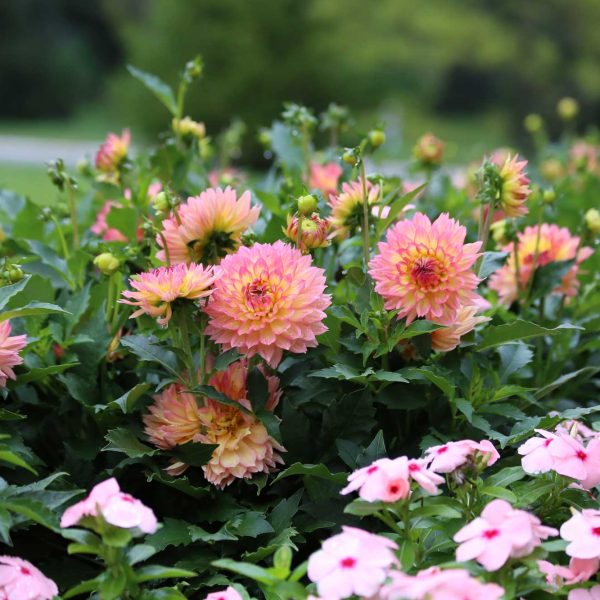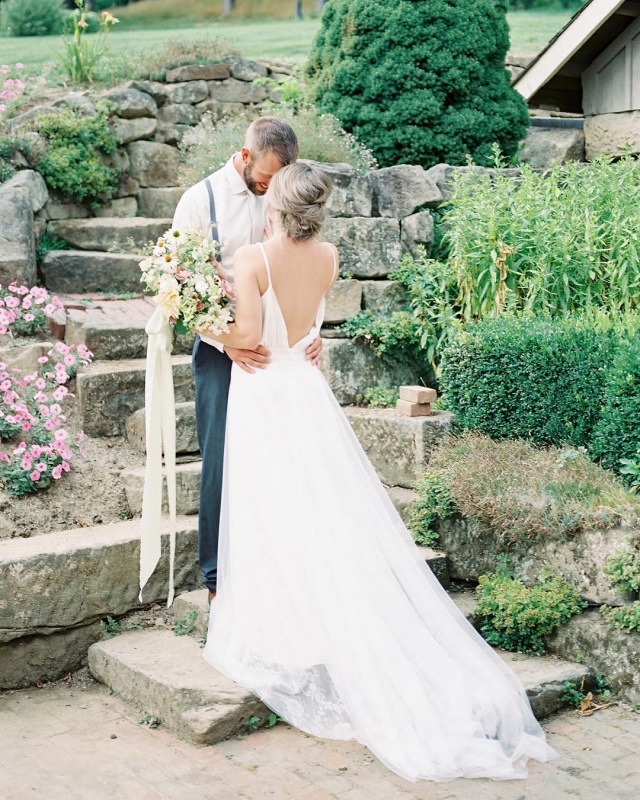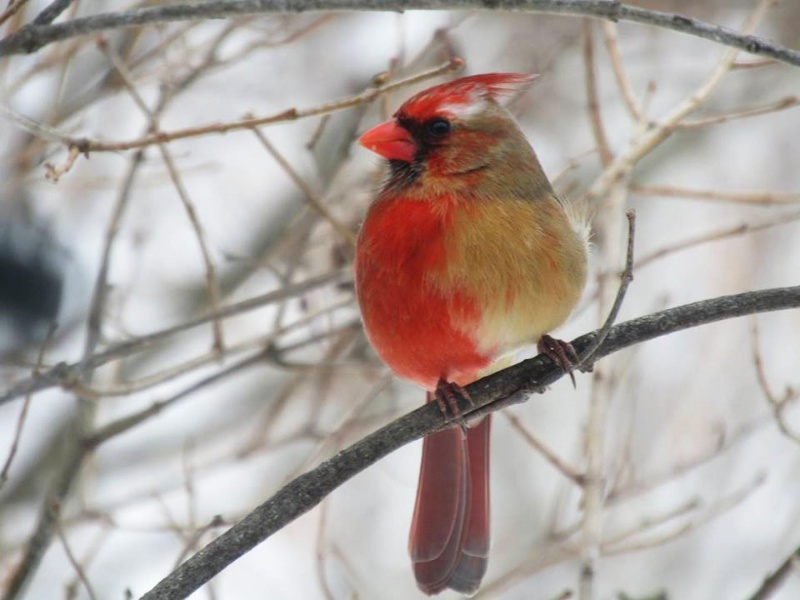Where Do Pollinators Go in the Winter?
As the leaves and temperatures drop, it might be tempting to forget about your pollinator garden until spring. But don’t call it quits just yet! While it may seem like the bees have vanished for the year, they haven’t actually gone anywhere.
Although some butterfly species, most notably the monarch, are well-known for migrating vast distances when the seasons change, most pollinators prefer to stay at home and ride out the cold. So, as unlikely as it seems, you are currently surrounded by bees and butterflies—even though you can’t see them.
Most native bee species will spend the winter in the nests that their mothers provisioned (a notable exception is the cuckoo bee). In fact, just like bears, many pollinators hibernate through the winter—and they may need a little help to survive until spring.
There are over 4,000 species of native bees in North America, making it virtually impossible to cover all their nesting habits in one blog post. Luckily, many species exhibit similar nesting behavior, so you can protect multiple species with the same actions. With that in mind, here are some important steps you can take to continue protecting the pollinators in your yard this winter:
1.) Leave the leaves: Yes, we probably sound like a broken record by now, but leaves and other “litter” are essential shelter for hibernating bumble bee queens and the larvae of numerous butterfly and moth species. Many of these species will happily tuck into a leaf or mulch pile, so you likely already have some nearby! For more information on why this so important, see our previous blog posts about the Leave the Leaves campaign and Fall Garden Tips to Benefit Bumble Bees All Year. As an added bonus, leaf and mulch piles will also attract beneficial insects like lady beetles, so they’ll already be perfectly situated to attack aphids in your garden when spring arrives!
2.) Minimize ground disturbances: Approximately 70 percent of all bee species nest in the ground—frequently in yards and garden beds. If you’re planning on planting a cool season cover, a winter crop, or just moving perennials around, try to keep any disturbances shallow (less than 6”) to avoid destroying native bee nests. If that’s not possible, you can also scout for nest aggregations and place markers so that you can avoid the nests while working in your garden.

Look carefully for nests when you embark upon a later fall, winter, or early spring project, and mark them off so as to avoid disturbing ground-nesting bees and other invertebrates. (Photo: Xerces Society / Sarah Foltz Jordan)
3.) Collect cavity nests before pruning perennials or disposing of garden materials: It’s unavoidable: some perennials really do need to be pruned in late fall or early winter. If that’s the case, check the stems of any woody plants you’ll be cutting off for cavity-nesting bees. Members of the family Megachilidae, like leafcutter (Megachile spp.) and mason bees (Osmia spp.), make it easy to identify their nests because they “cap” or close them with leaves, mud, resin, or even plant fiber. Other cavity-nesting species may be a little harder to spot, such as small carpenter bees (Ceratina spp.), which use the pith from inside the stem to construct nest cells and frequently don’t cap the entrances of their nests. Fun fact: Ceratina spp. mothers have been known to station themselves at the entrances of their nests, in order to protect their young! It’s also a good idea to examine any bamboo stakes or wooden dowels in your garden—many enterprising native bees will eagerly nest in bamboo. Once you’ve identified any nests, cut the stems at least 6–12” from the nest entrance and place them somewhere cool and dry (garages are ideal). Once it warms up in the spring, you can place the nests back out in your garden or habitat in a bundle, nesting box, or insect hotel. Such shelters will also attract beneficial insects, like aphid-hunting wasps (Pemphredon sp.) and lady beetles.

A variety of cavity-nesting bees can call a hollow stem home for the winter. Here, a leafcutter bee has neatly cut leaves and laid them across the entrance to their nest. (Photo: Xerces Society / Sara Morris)
4.) Check under logs and rocks before moving them: Countless invertebrate species prefer to nest and/or hibernate around rocks and woody debris. Make sure to check under logs and in wood piles before starting any fires in your wood stove! Invertebrates can also be found hibernating in downed trees, rock piles, and snags (dead trees or tree stumps). Many native pollinators, including leafcutter bees and the pure green sweat bee (Augochlora pura), will nest in abandoned wood-boring beetle burrows. Additionally, other invertebrates—like the woolly bear caterpillar, which becomes the Isabella tiger moth (Pyrrharctia isabella), and various predatory beetles (lady beetles, tiger beetles, etc.)—will overwinter inside or under old logs. In short, many pollinators and other beneficial insects may be hiding out in that dead tree you can’t stand any longer. If that’s the case, the eye-sore can be moved out of sight for the winter, and once spring has arrived, and your tenants have moved out, you can remove or repurpose the nesting material(s) in question.

A woolly bear caterpillar, which turns into the beautiful Isabella tiger moth (Pyrrharctia isabella), searches for a spot to overwinter in a downed tree. It is important to leave woody debris for the winter so as not to disturb these beloved creatures. (Photo: Douglas Mills / Flickr Creative Commons 2.0)
5.) Keep an eye out for “creative” nests: While the vast majority of native pollinators nest in either the ground or cavities, there are some oddities out there that will take up residence inside galls or snail shells—or even construct nests from pebbles glued together with resin! If you’re lucky enough to live in an area frequented by these artistic pollinators, remember to look for these unique creations. And if you’re not sure what kind of nest you’ve found, try posting pictures to BugGuide for identification assistance.

Some overwintering insects get creative with their nest location and nest building choices. This resin bee took up residence in a fence post. (Photo: Xerces Society / Sara Morris)
6.) Lastly, spread the word and share your finds: Talk to your family, friends, and neighbors about what you’re doing to protect pollinators this winter. If you’re worried about how your yard may look to others, hanging a pollinator habitat signwill let others know that your yard isn’t “messy;” it’s a safe place for pollinators to forage and nest. And don’t forget to share your photos with us on Facebook, Twitter, and Instagram, by tagging @XercesSociety!

Want more guidance on providing nesting and overwintering habitat for pollinators and beneficial insects? Keep an eye out for our forthcoming new guidelines, Natural Nesting & Overwintering: Creating Habitat for Pollinators & Other Beneficial Insects—to be posted on our Guidelines page!
Written by Sara Morris, Pollinator Program Communications Assistant
Tags: bees, beneficial insect, bumble bee, bumble bee conservation, bumble bees, Butterflies, Conservation Comes Home, gardening, habitat, native bees, Pollinator Conservation, pollinators
This entry was posted on Monday, December 10th, 2018 at 7:53 pm and is filed under Blog. You can follow any responses to this entry through the RSS 2.0 feed. Both comments and pings are currently closed.
View the Full Article (Where we found it.) HERE. Visit the Xerces Society: www.Xerces.org for more GREAT info!


















